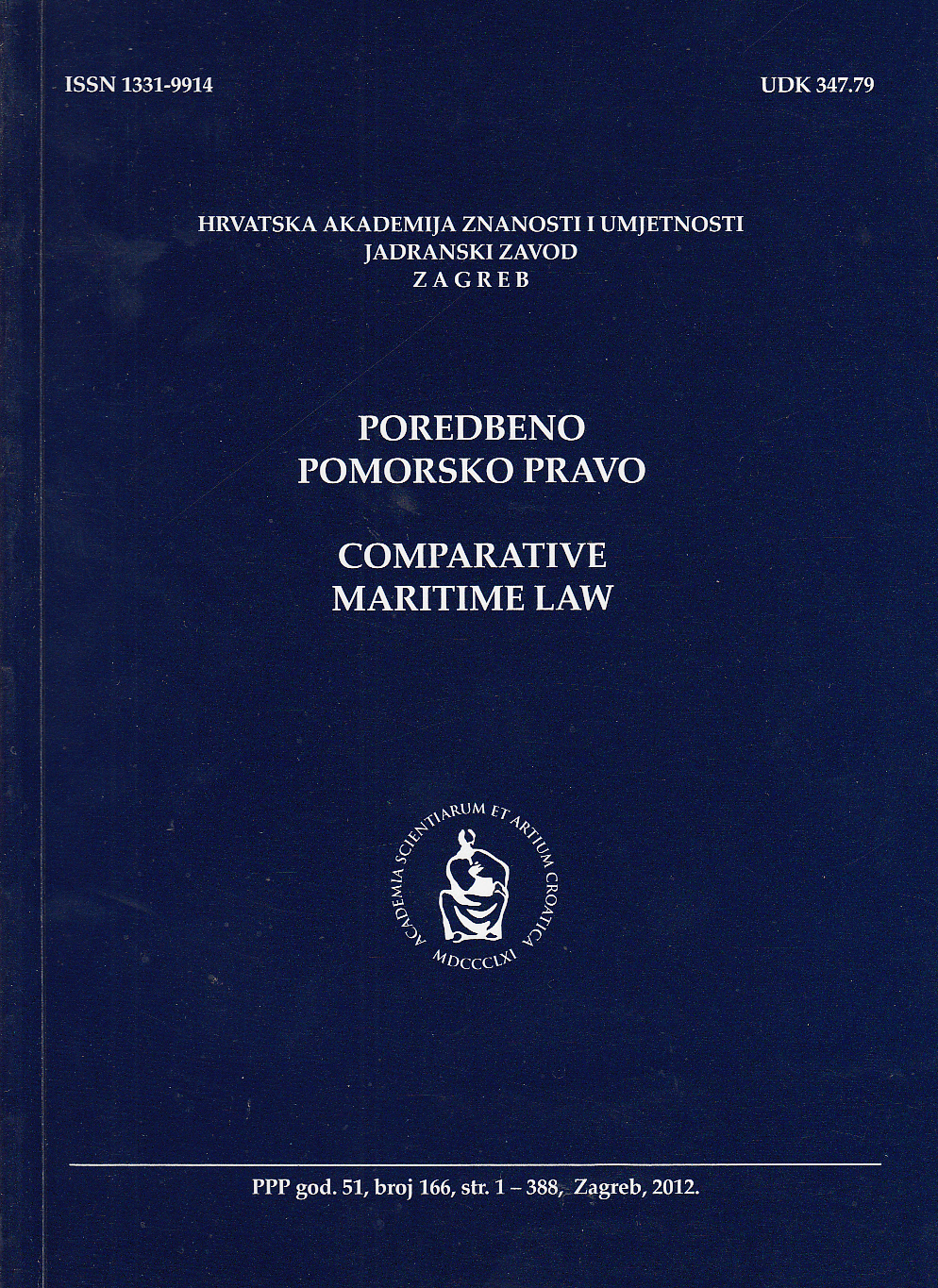Sporazumi o razgraničenju epikontinentskih pojaseva između država čije obale leže sučelice ili međusobno graniče u Sredozemlju
Continental shelf boundary agreements between the states with opposite or adjacent coasts in the Mediterranean
Author(s): Marina Vokić ŽužulSubject(s): International Law
Published by: Hrvatska akademija znanosti i umjetnosti
Keywords: continental shelf;delimitation;single maritime boundary;Mediterranean sea;
Summary/Abstract: Only ten continental shelf delimitation lines have already been defined by bilateral agreements between the states with opposite or adjacent coasts in the Mediterranean Sea. This paper analyses the content of each one of these agreements, and points out toward the necessity of defining a great number of new boundaries of the Mediterranean seabed and subsoil, especially taking into account the increasing economic importance of its natural resources. This analysis is preceded by the survey of the implementation of conventional rules regarding the outer limits of the continental shelf in the national legislation of the coastal states. Italy outstands as the most active Mediterranean state in defining the seabed boundaries. Alongside adopting detailed regulations regarding the outer limits of the continental shelf, Italy has concluded five delimitation agreements with its neighbouring states - the former Yugoslavia, Tunisia, Spain, Greece and Albania. In addition to these treaties, there are also considered the important features of two treaties that implement judgements rendered by the International Court of Justice (Libya - Tunisia and Libya - Malta), as well as the delimitation criteria implemented in the single maritime boundary agreements between Bulgaria and Turkey, and France and Monaco. A further subject-matter of the analysis is the continental shelf delimitation line defined in 1978 by the agreement between Turkey and the Soviet Union, which nine years later became the boundary of their exclusive economic zones. The aim of this paper is not only to provide an overview of all the defined continental shelf boundaries in the Mediterranean, but also to attempt to answer the following question: whether the already existing continental shelf boundaries, which have been negotiated for the seabed, should also become also the boundaries of the superjacent waters. This issue is of particular importance for the future delimitation of the exclusive economic zone, that is, the ecological and fisheries protection zone of the Republic of Croatia, with similar zones established by the neighbouring states in the Adriatic. Considering the recently initiated explorations of potential oil and gas fields in the southern Adriatic, the paper draws attention to the yet uncompleted task of drawing the line of lateral boundary of the continental shelf between Croatia and Montenegro.
Journal: Poredbeno pomorsko pravo
- Issue Year: 51/2012
- Issue No: 166
- Page Range: 79-135
- Page Count: 57
- Language: Croatian

